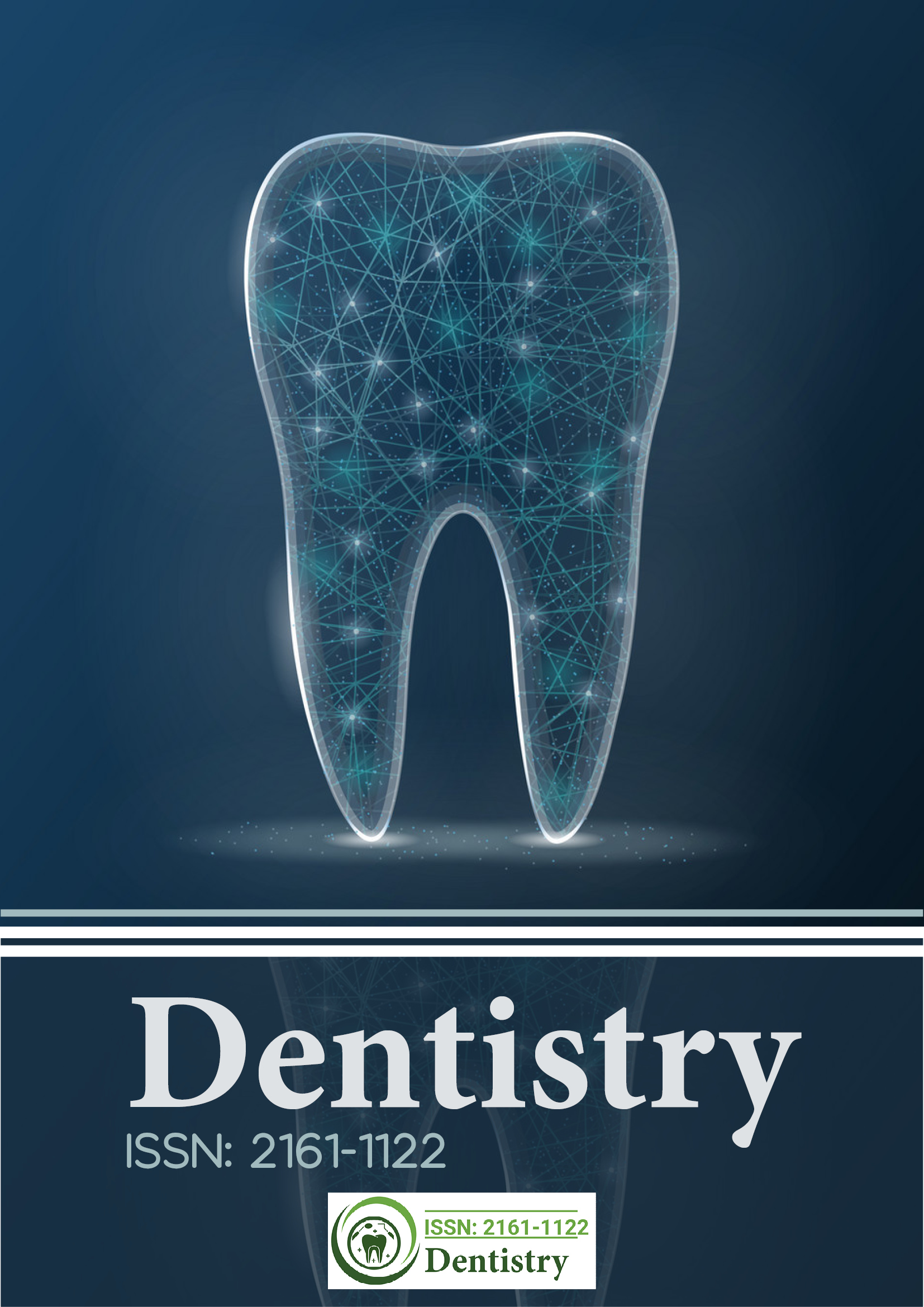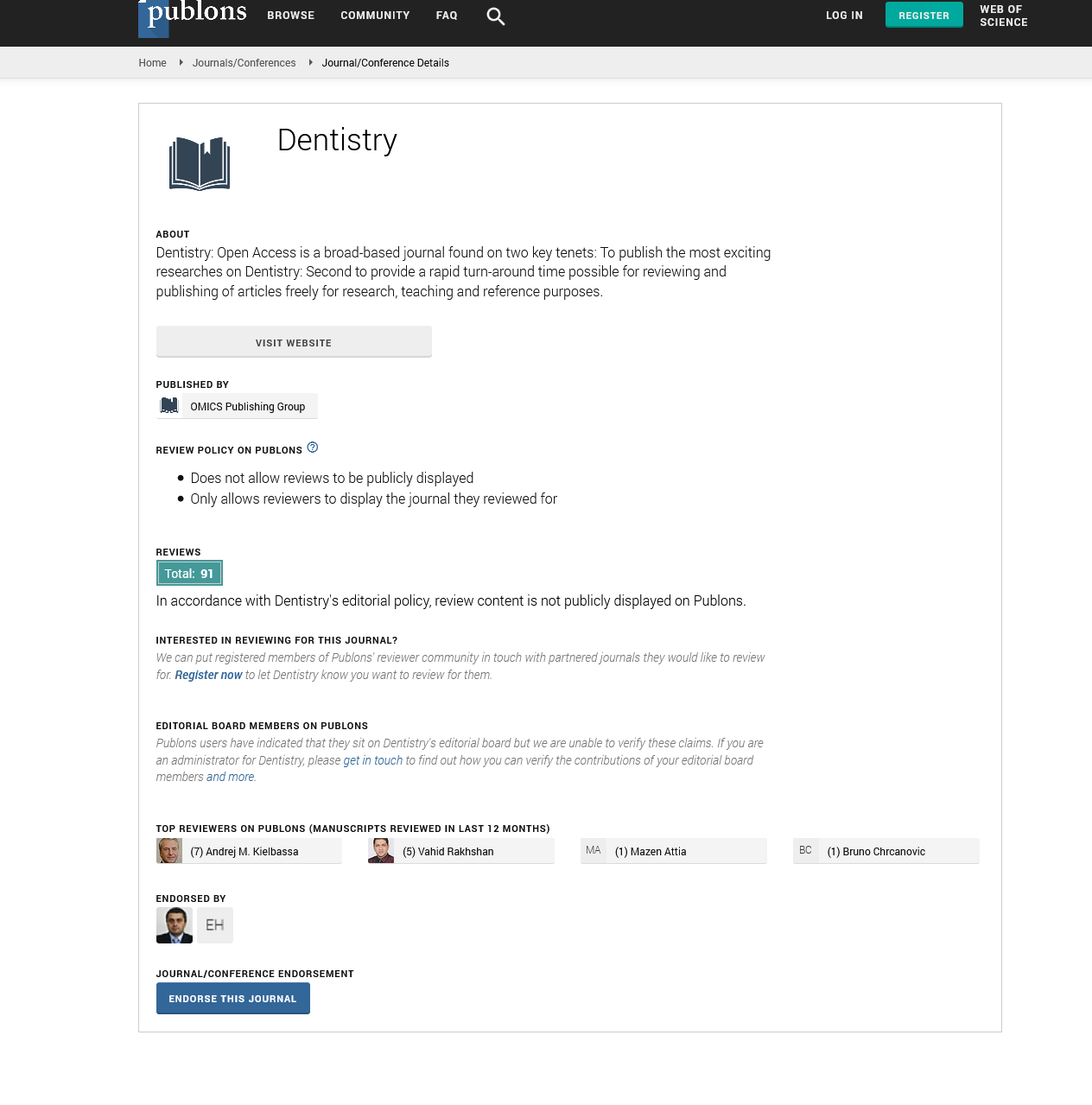Citations : 2345
Dentistry received 2345 citations as per Google Scholar report
Indexed In
- Genamics JournalSeek
- JournalTOCs
- CiteFactor
- Ulrich's Periodicals Directory
- RefSeek
- Hamdard University
- EBSCO A-Z
- Directory of Abstract Indexing for Journals
- OCLC- WorldCat
- Publons
- Geneva Foundation for Medical Education and Research
- Euro Pub
- Google Scholar
Useful Links
Share This Page
Journal Flyer

Open Access Journals
- Agri and Aquaculture
- Biochemistry
- Bioinformatics & Systems Biology
- Business & Management
- Chemistry
- Clinical Sciences
- Engineering
- Food & Nutrition
- General Science
- Genetics & Molecular Biology
- Immunology & Microbiology
- Medical Sciences
- Neuroscience & Psychology
- Nursing & Health Care
- Pharmaceutical Sciences
Bone-borne versus Tooth-borne Rapid Palatal Expansion (RPE) treatment in mixed dentition
Joint Event on 30th International Conference & Exhibition on Dental Medicine & Dental Implants & 5th Annual Summit on American Dental Science and Education
July 20-21, 2018 | Atlanta, USA
Sondus Ahmad Al-Kadri
Faculty of Dental Medicine Porto University, Portugal
Scientific Tracks Abstracts: Dentistry
Abstract:
Introduction: Bone-anchored maxillary expanders have been invented in order to provide extreme pure skeletal expansion. There are studies that address the clinical effectiveness and outcomes of bone-borne maxillary expansion, but they were done mostly on adult subjects with surgical assistance. Objective: The main aim of this paper is to review publications that studied the effectiveness of bone-borne maxillary expansion compared with tooth-borne maxillary expansion in mixed dentition subjects. Search Strategy: A literature review using relevant articles dated from 2006 to June 2016 on PubMed and B-on databases was conducted. Relevant data were extracted, grouped and analyzed concerning three areas of research: the skeletal vs dental expansion, side effects, and long-term stability of Tooth-borne maxillary expander (TBME), and Bone-borne maxillary expander (BBME). 16 articles were selected: 11studies addressed TBME; one study was a comparison between TBME and BBME, while the remaining 4 studies addressed BBME. Discussion: The outcome of the literature review showed that the percentage of skeletal expansion and dental expansion varied between TBME and BBME. Moreover, it also varied within TBME itself in different studies. Inter-coronal widths of maxillary permanent molars and first premolars in TBME were significantly greater than their counterparts in BBME. Generally, TBME showed a reduction in alveolar bone thickness on the buccal aspect of the banded teeth. Buccal tipping measured in TBME studies was small or high reaching up to 19 degrees, whereas in BBME group it was clinically trivial. Six months retention period is essential for recovery and long-term stability. Conclusion: Current available reviewed studies and clinical trials led to different inconsistent conclusions regarding the claim of the superiority and effectiveness of bone-borne versus tooth-borne maxillary expansion on mixed dentition patients. They were mostly done on adolescents or adults with surgical assistance. Although theoretically and logically this claim may seem valid, no evidence-based conclusion could be made since they were not done on patients below the age of twelve. Thus, future investigations on mixed dentition patients are highly recommended.
Biography :
Sondus Al-Kadri, Syrian dentist has a Bachelor Degree in Dental Medicine from International University of Science and Technology, Damascus 2011. Practiced general dentistry for two years in Saudi Arabia 2012-2013. Certified as a Clinical Orthodontic assistant from International Training Institute (ITI), and worked as an orthodontic assistant in one of the prestigious Orthodontic clinics in “Kharsa Orhto-dent clinics” 2014. Got a full Master scholarship from Global Platform for Syrian Student, Portugal from 2015-until now. Trained in Orthodontics Department at Malo clinics in Lisbon, 2015. Has a Master Degree in Dental Medicine from Faculty of Dental Medicine of Porto University, 2016. Now, she is finishing her Master Degree in Orthodontics in University Institute of Health Sciences, (CESPU), Portugal.
E-mail: Dr.Sondus-a-kadri@hotmail.com

